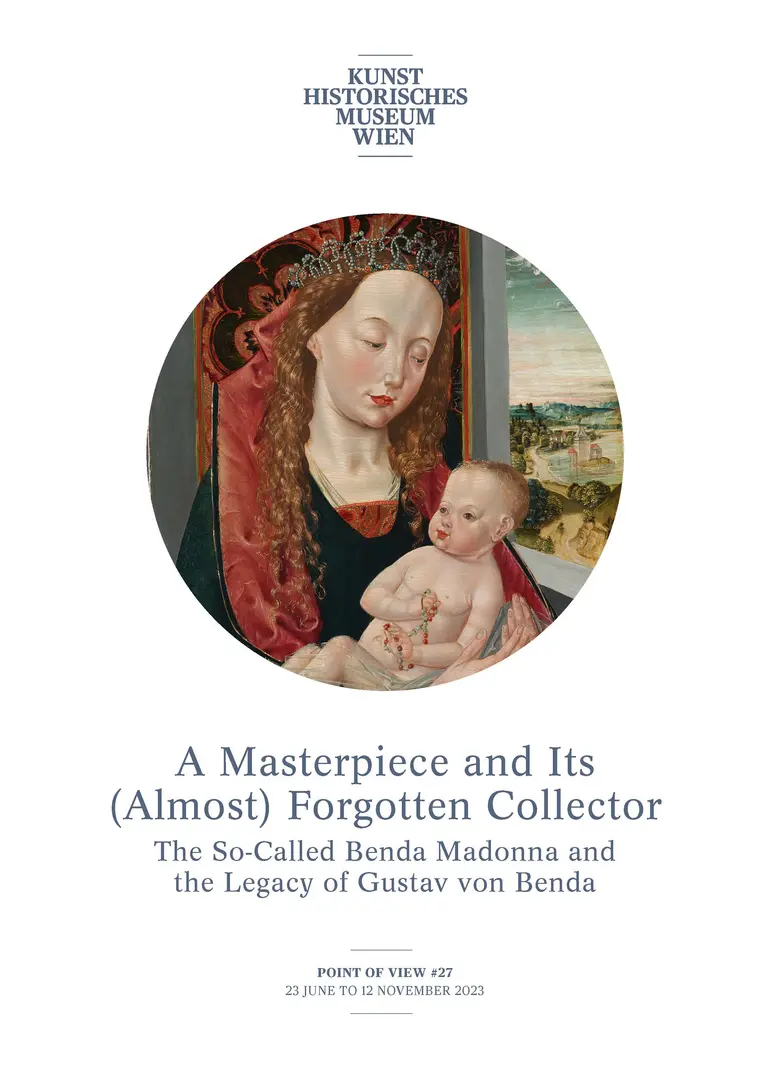Preface
The majority of artefacts in the Kunsthistorisches Museum bear witness to the connoisseurship and tastes of various Habsburgs. Amidst the wealth of High Renaissance and Baroque artworks and the dazzling splendor of the museum’s spectacular building, opened in 1891, one can easily overlook that the museum has roots beyond the imperial: in the early twentieth century, members of Vienna’s haute bourgeoisie gifted a number of seminal masterpieces that enriched the collection.
The most notable of these patrons was undoubtedly Gustav von Benda, who was knighted in 1911 after presenting the imperial collection with several outstanding artworks. In 1932, he bequeathed the majority of his impressive collection to the museum. Point of View #27 celebrates this nearly forgotten patron and his generous bequest. A masterly depiction of the Virgin, produced on the Upper Rhine in the late fifteenth century and recently restored, forms the heart of our small exhibition. Known as the Master of the Benda Madonna, the anonymous artist’s notname also commemorates Benda. A roughly contemporary bronze relief of the Virgin by an Italian sculptor, also formerly part of the Benda Collection, invites comparison.
We would like to thank Anneliese Földes, now based in Munich, for her essay on her restoration of the painting. This small exhibition and the accompanying booklet, published in digital format for the first time, serve as starting points for further research.
